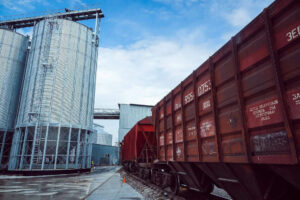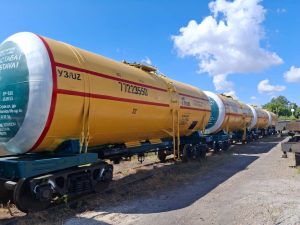How will the rail freight market change in 2023?
The forced adaptation of the agricultural sector to the consequences of last year’s increase in the price of railway logistics will change the balance of demand and supply in the market of railway freight transportation in 2023. The obvious consequence of the changes will be a radical reduction in the cargo base of the state railway transport operator “Ukrzaliznytsia”.
In 2022, farmers paid UAH 424 million for the use of Ukrzaliznytsia’s fleet of grain trucks – this became the most profitable direction of the state transportation operator in the year of the war, even surpassing the indicators of 2021 and 2020 (which amounted to UAH 159 and 50 million, respectively). There are objective reasons that Ukrzaliznytsia will not be able to repeat the record financial results from the use of grain wagons in 2023. And even more – the very actions of the state operator, which led to the growth of revenues in 2022, will soon lead to the inevitable loss of a significant share of the freight base, and thus the source of revenues.
The prerequisites for such consequences for Ukrzaliznytsia will be a reduced gross harvest due to agrarians’ reduction of sown areas, a change in the structure of exports in the 2023/24 MR, as well as the purchase by agrarian producers of their own fleet of cars and grain wagons due to the unfriendly policy of Ukrzaliznytsia.
Until recently, a significant share of exports was occupied by corn, its yield of up to 120 t/ha provided the largest mass of grain cargo for the railway. But it was corn that suffered the most in 2022, as a result of the rules and policies of the UZ, which brought the costs of the logistics of this crop in general beyond the profitability of its production. Due to this, a significant share of agricultural producers will switch to rapeseed, sunflower and other crops, the cost of which can withstand expensive logistics. These crops have different sales regions, different routes to markets and different logistics time frames.
For example, Ukrainian corn must be sold before Brazilian corn. Therefore, in July-August, farmers urgently exported wheat in order to free up warehouses for corn, half of which they tried to export in time by December. This cycle caused imbalances in the rail transportation market, when every autumn the increased demand for transportation became a factor in the shortage of transportation capacity and the seasonal increase in the cost of logistics.
A fundamental change in the structure of exports will change this picture. After all, rapeseed, sunflower and other crops, the cost of which can withstand expensive logistics, have a different specificity: they can be sold all year round, and they do not require emergency removal during a short period, but will be removed smoothly, without haste and excitement.
The car park of Ukrzaliznytsia, which in the pre-war years was in demand mainly during the peak seasons on the spot markets, risks running out of cargo under such a development. In addition, the reformatting of the annual logistics cycle in 2023 will become a factor in the emergence of a surplus of grain wagons. This will stimulate the owners of commercial private parks to offer the owners of agricultural cargo more flexible terms of cooperation, which were avoided by the commercial department of “Ukrzaliznytsia”, namely, to enter into long-term mutual obligations, when the owner guarantees the availability of the cargo, and the carrier undertakes to deliver it at a certain price. Also, a significant increase in the cost of using Ukrzaliznytsia wagons in 2022 stimulated agricultural producers who used the grain trucks of the state operator to reorient themselves to other means of transportation.
In 2022, farmers purchased a large number of grain trucks, which are now used for long-distance grain transportation. Even after victory and the final unblocking of the seaports, the cargo of these manufacturers will go to the ports in these cars, not rail cars. It is characteristic that in the year of the war, the Ukrainian car-building factories “Dniprovagonmash” and DMZ “Karpaty” built about 1,600 grain trucks and still have orders from agricultural producers who used to use the parks of “Ukrzaliznytsia”. These loads, for which wagons are being built, will no longer return to the wagons of the state operator.
These factors determine the scenario that the policy of “Ukrzaliznytsia” in 2023 will be aimed at compensating for the lack of its freight base. This can happen either by raising transportation tariffs, or by using the levers of the transportation administration by the state operator to create an advantage for Ukrzaliznytsia wagons.
There are reasons to expect an increase in the transportation tariff itself and an increase in additional items of cargo transportation expenses. “Ukrzaliznytsia”, as a state monopoly, will be forced to compensate for the decrease in income from the operation of its own fleet of grain trucks due to mass abandonment of it by cargo owners in favor of private ones. An increase in new “commercial fees – taxes” on private fleets of grain trucks, or even an open “commercial fight” against them, is not excluded. Only the state, as a shareholder of Ukrzaliznytsia, can stop this endless circle of commercial struggle, if the Cabinet of Ministers and the Office of the President show political will and analyze the cause-and-effect relationships of the increase in the price of railway logistics in the year of the war and eliminate the root causes.





